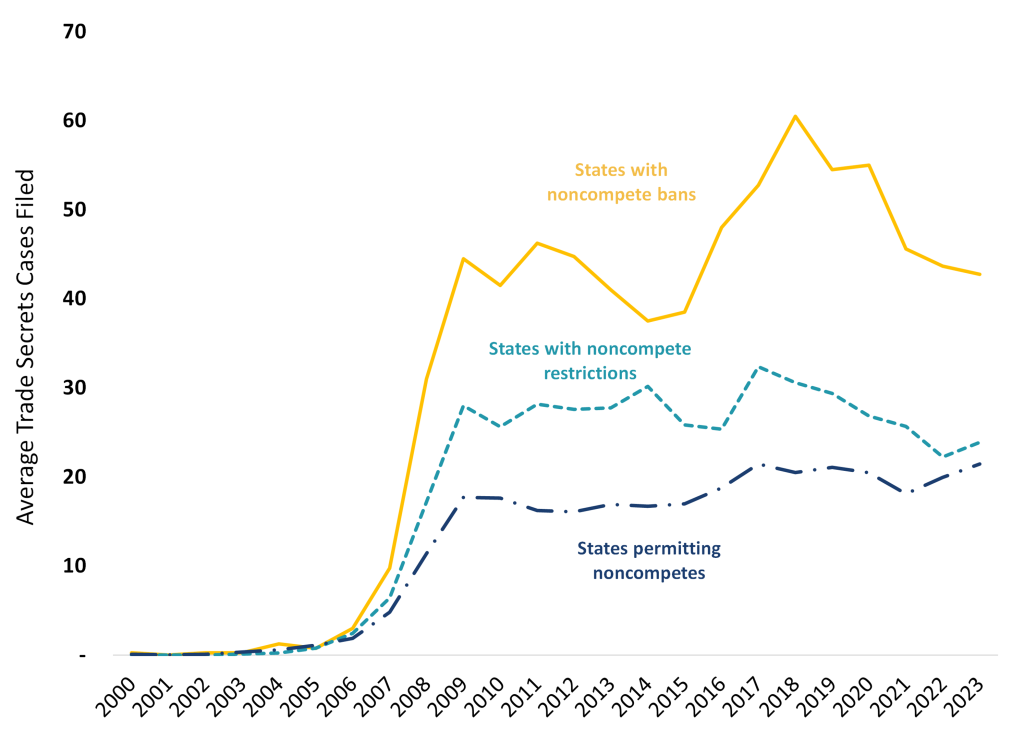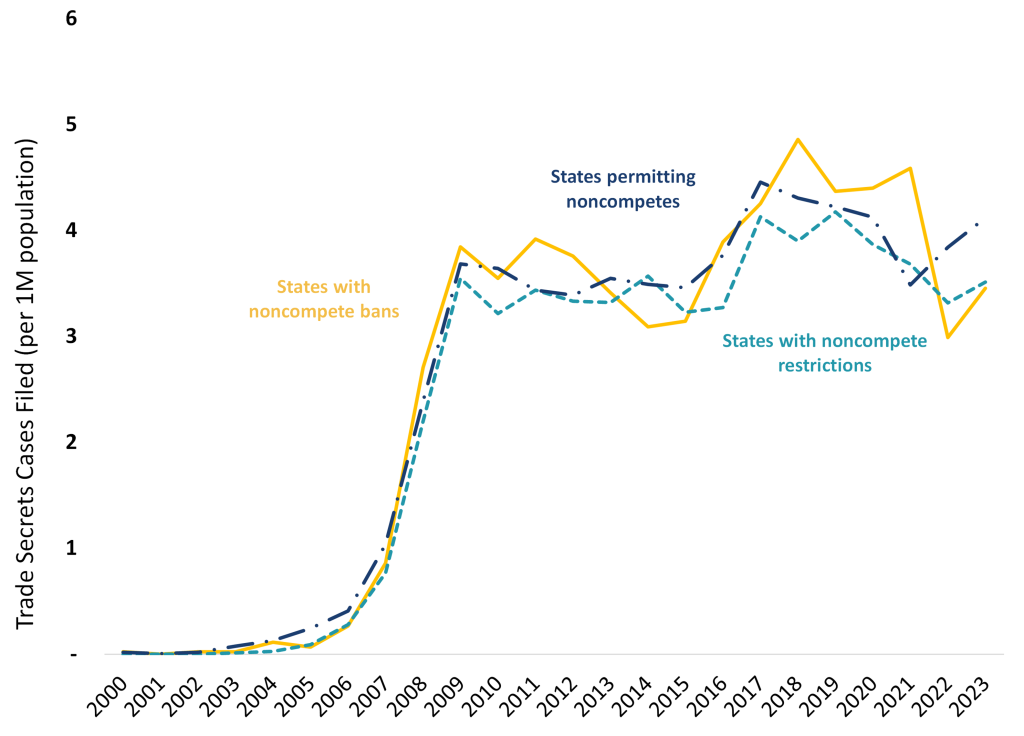
Following the regional bank crisis in March of 2023,[1] many businesses started to review their treasury-management procedures for cash deposits out of safety concerns in the event of an insolvency of their depository bank. The reviews brought new attention to deposit programs designed to maximize access to insurance coverage provided by the Federal Deposit Insurance Corporation (“FDIC”) for deposits larger than the current $250,000 standard maximum deposit insurance limit per account at a depository bank. This article focuses on the IntraFi Cash Service of IntraFi LLC (“IntraFi”) as an example of such a program. The article will respond to frequently asked questions about how the IntraFi program works and how the depositors and their lenders are protected in the program.
How Does the IntraFi Program Work?
When placing funds on behalf of a customer through the IntraFi program, the customer’s relationship institution, which may be a bank, broker-dealer, or other eligible financial institution (“Relationship Institution”), and the customer enter into a deposit placement agreement (“DPA”) and a custodial agreement with the Relationship Institution as the custodian. The DPA states that the Relationship Institution will act as the customer’s agent in placing deposits. The custodial agreement further authorizes the Relationship Institution to maintain a custodial account[2] for the customer for the purpose of crediting the deposits placed through the program.
The Relationship Institution, in turn, will have entered into a Participating Institution Agreement with IntraFi and a sub-custody agreement (“Sub-Custody Agreement”) with a large money-center bank as a sub-custodian (“Sub-Custodian”) for the IntraFi program. The funds the Relationship Institution places for the customer are then, as described below, deposited with various FDIC-insured deposit-taking financial institutions (“Destination Institutions”) that enter into Participating Institution Agreements with IntraFi and are eligible to receive funds through the IntraFi program.
The placements are in amounts and pursuant to arrangements that make the funds eligible for deposit insurance provided by the FDIC ($250,000 per owner, per Destination Institution for each account ownership category). Specifically, the benefits of that insurance for the deposits at the Destination Institutions may be passed on to the customer under the “pass-through” rules established by the FDIC, which enable funds deposited by a custodian on behalf of the customer to be insured as if the customer had made the deposit with the Destination Institution itself.[3] Notably, customers can instruct the Relationship Institution not to deposit funds with certain Destination Institutions where the customer already maintains accounts, so as not to exceed coverage limits at that insured bank. The IntraFi program allows depositors to access millions in aggregate FDIC insurance across network banks.
The Sub-Custodian acts under the Sub-Custody Agreement as an intermediary to have the funds deposited with the Destination Institutions. The funds are then placed into deposit accounts at each Destination Institution, with the deposit accounts being in the name of the Sub-Custodian at the Destination Institution.
The Relationship Institution, the Destination Institutions, and the Sub-Custodian maintain appropriate books and records. These books and records, when considered together, reflect that the customer is the ultimate beneficiary of the funds placed in a deposit account at the relevant Destination Institution. Each deposit is recorded (a) on the records of the Destination Institution, in the name of the Sub-Custodian as the Relationship Institution’s sub-custodian; (b) on the records of the Sub-Custodian, in the Relationship Institution’s name as the customer’s custodian (showing that the Sub-Custodian is holding any claims with respect to the funds against the Destination Institution for the benefit of the Relationship Institution); and (c) on the records of the Relationship Institution, in the customer’s name (showing that the Relationship Institution is holding its claims with respect to the funds against the Sub-Custodian for the benefit of the customer).
In addition, under the DPA, the Relationship Institution agrees with the customer that it is acting as a “securities intermediary” under Article 8 of the UCC with respect to the custodial account established for the customer and that it will treat as “financial assets” under Article 8 of the UCC all of the Relationship Institution’s rights against the Sub-Custodian with respect to the deposit accounts placed by the Sub-Custodian. Financial asset means, among other things, “any property that is held by a securities intermediary for another person in a securities account if the securities intermediary has expressly agreed with the other person that the property is to be treated as a financial asset under [Article 8].”[4] The custodial account is a “securities account” under the UCC. Once the rights to payment with respect to the deposit accounts are financial assets credited to the custodial account, the customer acquires a security entitlement to them, which is a combination of contractual rights against the Relationship Institution, as securities intermediary, and a property interest in the financial assets. The customer’s rights include obtaining payments and distributions on the financial assets, exercising rights with respect to those financial assets, changing the form of holding of those financial assets, and causing the Relationship Institution to comply with entitlement orders to transfer or redeem those financial assets.[5]
How Is the Customer Protected in the Event of Insolvency of the Relationship Institution?
As noted above, the claims against the Sub-Custodian are credited to the customer’s account and treated as financial assets, giving the customer security entitlements against the Relationship Institution. Under Article 8, financial assets so credited, with exceptions not relevant here, are not property of the Relationship Institution and are not subject to the claims of the Relationship Institution’s creditors. As a result, the financial assets—the claims of the Relationship Institution against the Sub-Custodian—would not be included in the insolvency estate of the Relationship Institution. Practically, in most cases when a Relationship Institution has failed, its deposits and the custodial account have been assumed by another Relationship Institution, and business has continued as usual.
How Is the Customer Protected in the Event of Insolvency of the Sub-Custodian?
Similarly, under the Sub-Custody Agreement, the parties agree that the Sub-Custodian is acting as a securities intermediary and that the claims of the Sub-Custodian against the Destination Institutions are treated as financial assets under Article 8. Accordingly, such claims against the Destination Institutions are treated as security entitlements of the Relationship Institution against the Sub-Custodian. As with the Relationship Institution, financial assets, with exceptions not relevant here, are not property of the Sub-Custodian, are not subject to the claims of the Sub-Custodian’s creditors, and would not be included in the insolvency estate of the Sub-Custodian.
How Is the Customer Protected against the Exercise of Setoff by the Sub-Custodian in Case the Sub-Custodian Has an Unrelated Claim against the Relationship Institution?
The only contractual right of setoff that the Sub-Custodian has under the Sub-Custody Agreement against the Relationship Institution is for certain limited charges due to the Sub-Custodian as compensation in the Sub-Custody Agreement.
The Sub-Custodian would likely not have a noncontractual common-law right of setoff against the funds placed with it under the IntraFi program for amounts owed to the Sub-Custodian unrelated to the IntraFi program. Under the common law of most states, noncontractual common-law setoff is permitted only when the debts owed are “mutual.”[6] Mutuality requires that both parties be acting in the same capacity. Under the Sub-Custody Agreement, though, the Sub-Custodian is acting as a securities intermediary under Article 8 for the ultimate benefit of customers of the Relationship Institution. The Sub-Custodian would likely be acting in a different capacity as a creditor of the Relationship Institution for amounts owed unrelated to the IntraFi program. (The analysis would be similar if the Destination Institution were to consider exercising a setoff right for unrelated claims against the Sub-Custodian.)
How Does a Lender to the Customer Obtain a Perfected Security Interest in the Customer’s Rights to Payment under the IntraFi Program with the Desired Priority?
The lender’s security agreement needs to reasonably identify the collateral. The collateral description in a security agreement may refer to security entitlements or investment property, which is the generic UCC Article 9 category into which security entitlements fall. Alternatively, the collateral description could be even more specific while using one of those terms, such as “all of the debtor’s right, title, or interest in security entitlements to financial assets consisting of rights to payment under the IntraFi program maintained by [the Relationship Institution] for the benefit of the debtor, and the proceeds thereof.”
The security interest may be perfected by the lender filing in the appropriate UCC filing office a properly completed UCC financing statement against the customer and indicating as the collateral the security entitlement or investment property or a more specific description of the security entitlement or investment property using those terms, and the proceeds thereof.
The security interest granted by the customer may also be perfected by the Relationship Institution obtaining “control” of the security entitlements. If the lender is also the Relationship Institution, the lender obtains control automatically because the Relationship Institution is the customer’s securities intermediary. If the lender is not the Relationship Institution, the lender should enter into a securities account control agreement with the Relationship Institution and the customer, which will require the Relationship Institution to follow, without further consent of the customer, the entitlement orders of the lender, rather than the customer, under certain circumstances. If the lender perfects the security interest by control, there is no need for the lender to file a financing statement against the customer to perfect the lender’s security interest in the customer’s rights to payment under the IntraFi program.
Perfection of the lender’s security interest by control is the preferable method of perfection for the lender.[7] A security interest in a security entitlement or investment property perfected by control will have priority over a security interest in the same collateral perfected by the filing of a financing statement. This is the case even if the perfection of the security interest by control occurred after the filing of the financing statement and even if the secured party perfected by control knew of the financing statement filing.
Additional Considerations
Notably, the DPA provides that the customer has the right to dismiss the Relationship Institution as custodian and request that any of the funds placed for the benefit of the customer with a Destination Institution be retitled by the Destination Institution in the name of the customer directly. This process has the effect of unwinding the securities account held by the Relationship Institution and the Relationship Institution ceasing its role as a securities intermediary with respect to the funds.
If the customer exercises this right and the funds are so retitled, (a) there would no longer be a security entitlement with respect to the customer’s right to payment of the funds, and (b) the Relationship Institution’s security interest with respect to the right to the funds would no longer be perfected by control or may not be entitled to the priority afforded by control. The Relationship Institution may then need to take any additional steps necessary to preserve the perfection and priority of the security interest. As a result, a Relationship Institution that is also a lender may wish to include a provision in its credit documents providing that the customer shall postpone the exercise of its rights under the DPA while any obligations under the credit documents are outstanding or while the Relationship Institution has any obligation to extend credit under the credit documents. A third-party lender will want to address this issue in its account control agreement with the customer and the Relationship Institution.
Concluding Comments
This article provides only a brief summary of the IntraFi program and does so as an example of similar programs. It does not respond to all questions that may arise under these types of FDIC insurance maximization programs and is not a substitute for a careful review of the documentation for each program.
Tobias Adrian et al., Int’l Monetary Fund, Global Financial Stability Notes: The US Banking Sector Since the March 2023 Turmoil: Navigating the Aftermath (Mar. 2024). ↑
The custodial account will be a securities account for purposes of Article 8 of the Uniform Commercial Code (“UCC”), which is an account to which securities or other financial assets may be credited. The crediting of the deposit to the custodial account does not in and of itself render the deposit a security for purposes of federal securities laws. ↑
Pass-Through Deposit Insurance Coverage (12 C.F.R. § 330.5; 12 C.F.R. § 330.7), Fed. Deposit Ins. Corp. (last updated May 29, 2024). ↑
UCC § 8-102(a)(9) (Am. L. Inst. & Unif. L. Comm’n 2023). ↑
See id. §§ 8-504(a), 8-505(a), 8-506(a), 8-507, 8-508. ↑
U.S. Dep’t of Just., Justice Manual: Civil Resource Manual ch. 65, § IIA (updated June 1998). ↑
UCC § 9-328 (Am. L. Inst. & Unif. L. Comm’n 2023). ↑













